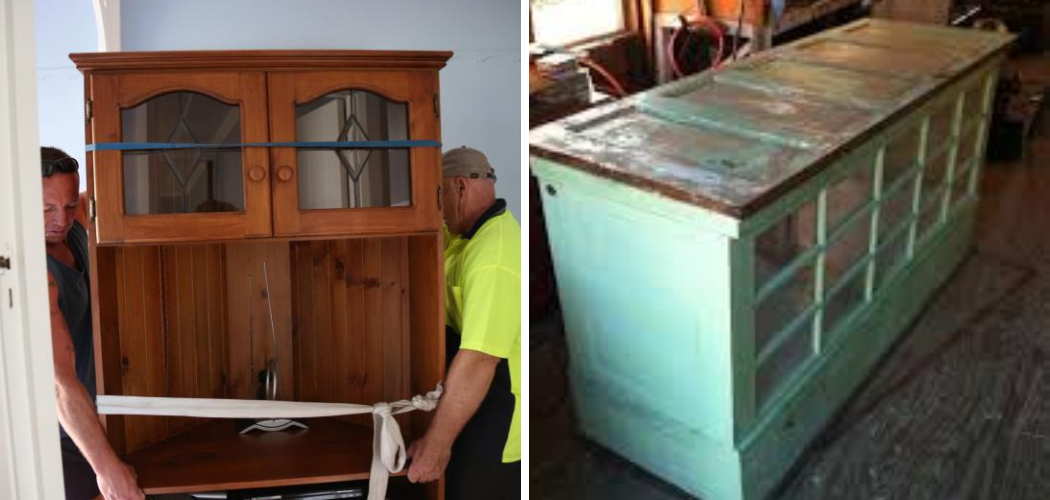Disposing of old cabinets can be a daunting task, especially if you’re unsure of the best practices for removing and recycling them. Whether you’re remodeling your kitchen, updating your bathroom, or simply decluttering your home, it’s essential to handle old cabinets responsibly to minimize environmental impact and ensure safety.
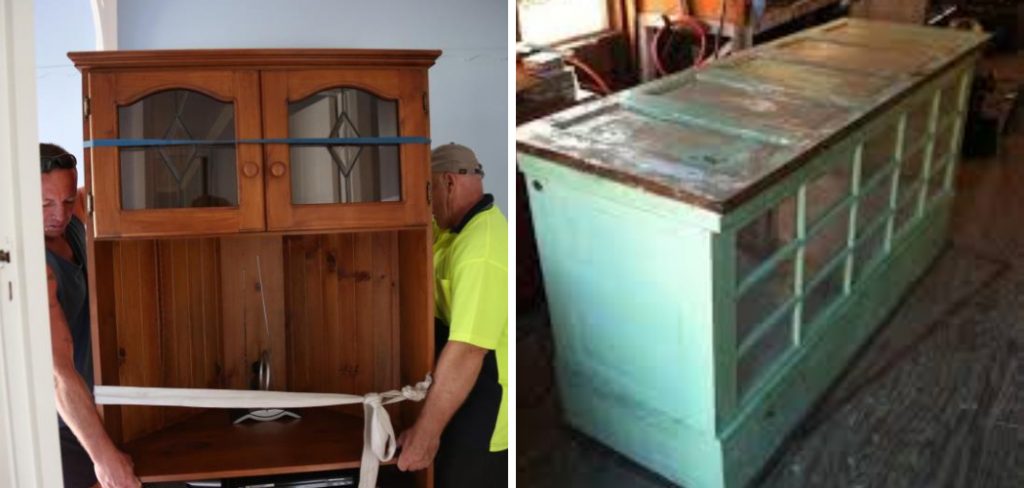
In this guide on how to dispose of old cabinets, we will outline various methods and tips for effectively and sustainably disposing of unwanted cabinets.
What to Consider Before Disposing of Old Cabinets
Before you begin the process of disposing of your old cabinets, there are a few things to consider:
1.The Material of the Cabinets:
Different materials, such as wood, metal, or plastic, may require different disposal methods. For example, wooden cabinets can often be repurposed or recycled, while metal cabinets may need to be taken to a scrapyard. It’s essential to research the material of your cabinets before deciding on a disposal method.
2.The Condition of the Cabinets:
If your cabinets are in good condition, you may want to consider donating them instead of disposing of them. Many organizations and charities accept donations of used furniture, including cabinets, which can benefit someone in need.
3.Local Regulations:
Before disposing of any old cabinets, make sure to check your local regulations for proper disposal methods. Some areas have specific guidelines for waste management and may require certain steps, such as separating materials or using designated disposal facilities.
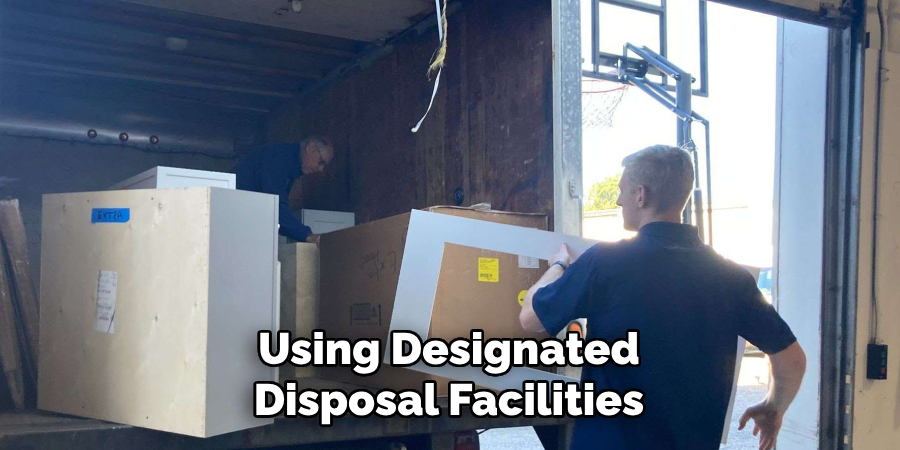
10 Step-by-step Guidelines on How to Dispose of Old Cabinets
Step 1: Empty the Cabinets
Before you can dispose of your old cabinets, the first step is to empty them completely. Remove all items, including dishes, food, toiletries, or any other belongings stored inside the cabinets. This not only makes the cabinets lighter and easier to handle but also ensures that nothing valuable or essential is mistakenly thrown away.
Take the time to sort through the contents, discard any expired or unwanted items and set aside what you plan to keep. Organisation at this stage will make the subsequent steps of the disposal process more efficient.
Step 2: Remove the Cabinets from the Wall
If your cabinets are attached to the wall, you will need to carefully remove them using a drill or screwdriver. Make sure to have someone assist you in holding the cabinet as you unscrew it from the wall to prevent any accidents.
Otherwise, if the cabinets are freestanding, they can simply be lifted and moved to a designated disposal area.
Step 3: Disassemble the Cabinets
Once the cabinets are detached from the wall or each other (if they are stacked), you may need to disassemble them into smaller parts for easier transportation. This step is not required but can make disposing of larger cabinets more manageable.
You can use a hammer or pry bar to remove any nails, screws or glue holding the cabinets together. It’s essential to wear protective gear, such as gloves and safety glasses while disassembling the cabinets.
Step 4: Check for Hazardous Materials
Before disposing of any material, it’s crucial to check for any hazardous substances that may be present in the cabinets. This could include paint, varnish, or other chemicals used in the construction or finishing of the cabinets. If these materials are present, they will need to be disposed of separately following specific guidelines.
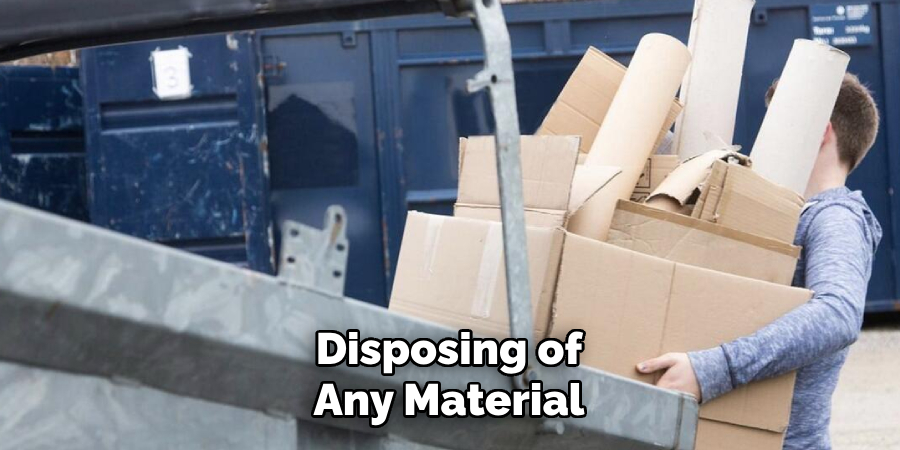
You can contact your local waste management facility for information on how to properly dispose of hazardous materials.
Step 5: Donate or Sell Usable Cabinets
As mentioned earlier, if your cabinets are in good condition, consider donating them to a charitable organization or selling them through online platforms or garage sales. This not only prevents perfectly functional cabinets from going to waste but also benefits someone in need or helps you recoup some of the costs of new cabinets.
It’s also worth checking if the store where you purchased your new cabinets has a buy-back or trade-in program for old cabinets.
Step 6: Recycle Wooden Cabinets
Wooden cabinets can often be recycled into other products, such as mulch or compost. Check with local recycling facilities to see if they accept wooden materials and what guidelines they have in place for recycling them.
Alternatively, you can repurpose wooden cabinets by using them for DIY projects or donating them to someone who may find them useful.
Step 7: Take Metal Cabinets to a Scrapyard
Metal cabinets can typically be taken to scrap yards where they will be melted down and reused. However, some areas may require metal cabinets to be disposed of through designated facilities due to safety concerns. Be sure to check your local regulations before taking metal cabinets to a scrapyard.
Although metal cabinets are not recyclable, melting them down for reuse reduces the need for new materials and minimizes environmental impact.
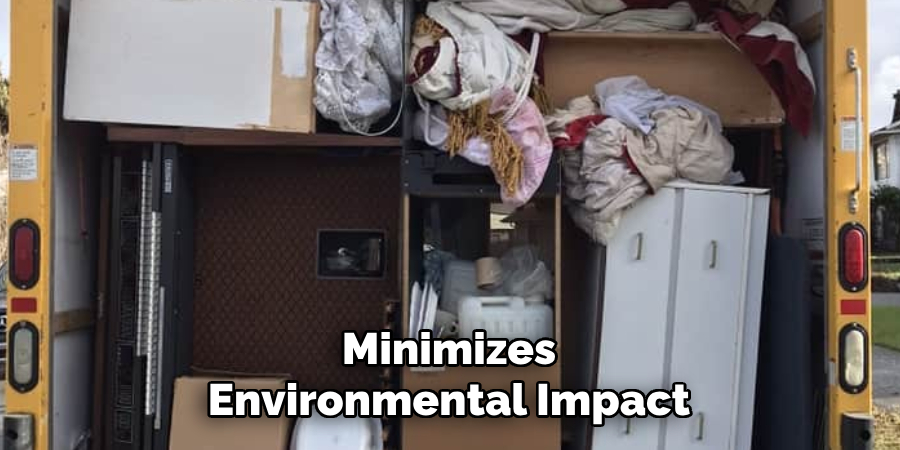
Step 8: Dispose of Plastic Cabinets Properly
Plastic cabinets can be more challenging to dispose of as they are not always accepted at recycling facilities. If possible, try to find a facility that accepts plastic materials and follow any guidelines they have in place.
If no recycling options are available, consider repurposing your plastic cabinets or disposing of them with regular waste following your local regulations.
Step 9: Hire a Junk Removal Service
If you’re unable to dispose of your old cabinets yourself, consider hiring a junk removal service. They will handle the entire process for you, from emptying and disassembling the cabinets to transporting them to designated facilities.
Be sure to research and compare prices and reviews before choosing a junk removal service.
Step 10: Dispose of Any Remaining Waste Properly
Once your cabinets have been disposed of, make sure to clean up any remaining debris or waste properly. This includes removing any nails or screws left behind and disposing of them in designated areas.
It’s essential to leave the disposal area clean and safe for others who may need to use it. If any hazardous materials were present, make sure to follow proper guidelines for disposal.
Additional Tips
1.Use Protective Gear
When handling and disposing of old cabinets, always wear appropriate protective gear such as gloves, safety glasses, and sturdy footwear. This will help prevent injuries from sharp edges, falling objects, or hazardous materials.
2.Plan for Disposal Ahead of Time
Don’t wait until the last minute to plan how you will dispose of your old cabinets. Research your options and make any necessary arrangements before starting the removal process. This will ensure a smooth and efficient disposal.
3.Take Safety Precautions
Ensure the area is well-ventilated when working indoors, particularly if you need to sand or cut the cabinets. Additionally, proper lifting techniques should be used to avoid injury, and a dolly or cart should be considered to transport heavier items.
4.Label and Organize Materials
If you’re disassembling the cabinets, keep track of any screws, nails, or other hardware by placing them in labeled containers. This will make reassembly easier if you decide to repurpose the cabinets or use the hardware for other projects.
5.Seek Professional Help If Needed
If the cabinets are large, heavy, or difficult to remove, don’t hesitate to seek professional help. This could include hiring a handyman, carpenter, or specialized service to safely and efficiently handle the disposal process.
6.Consider the Environmental Impact
Always consider the environmental impact of your disposal methods. Recycling or repurposing materials helps reduce waste and the strain on landfills. Whenever possible, choose eco-friendly options and support sustainable practices.
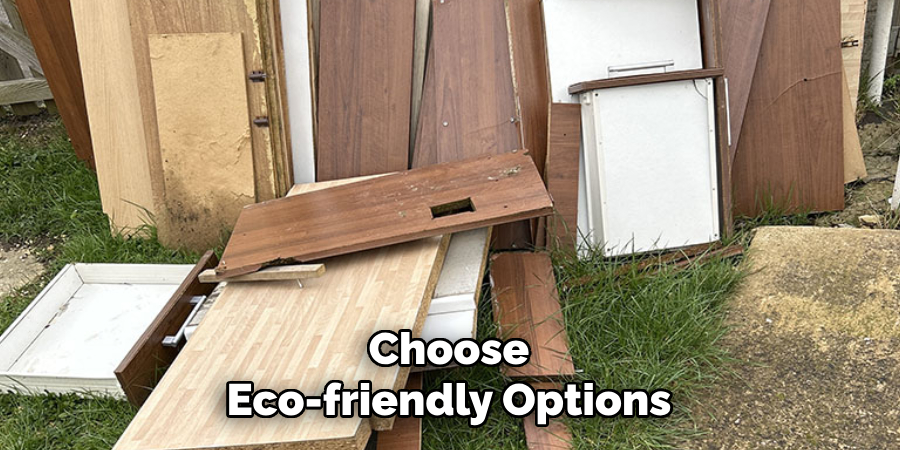
Frequently Asked Questions
Q: Can I Just Throw My Old Cabinets in the Trash?
A: It’s not recommended to dispose of large or bulky items such as cabinets in regular household waste. This can create safety hazards and may not be accepted by your waste management facility. The best option is to research proper disposal methods or hire a junk removal service.
Q: How Do I Know if My Cabinets Contain Hazardous Materials?
A: Check for any warning labels or symbols on the cabinets and refer to product information or manuals. If you’re still unsure, it’s best to assume they contain hazardous materials and dispose of them accordingly.
Q: Can I Donate Damaged Cabinets?
A: It depends on the extent of the damage and the organization’s policies. Some may accept damaged items that can be repaired, while others may only accept fully functional items. It’s best to check with the specific organization before donating.
Conclusion
Properly disposing of old cabinets not only helps declutter your space and make room for new ones but also has potential benefits for the environment and others in need. Follow these step-by-step guidelines to ensure a safe and environmentally-friendly disposal process while also considering options such as donation or recycling.
Always check with your local regulations before disposing of any material to ensure you are following proper guidelines. By taking these steps on how to dispose of old cabinets, you can not only get rid of your old cabinets but also make a positive impact on the world around you.
